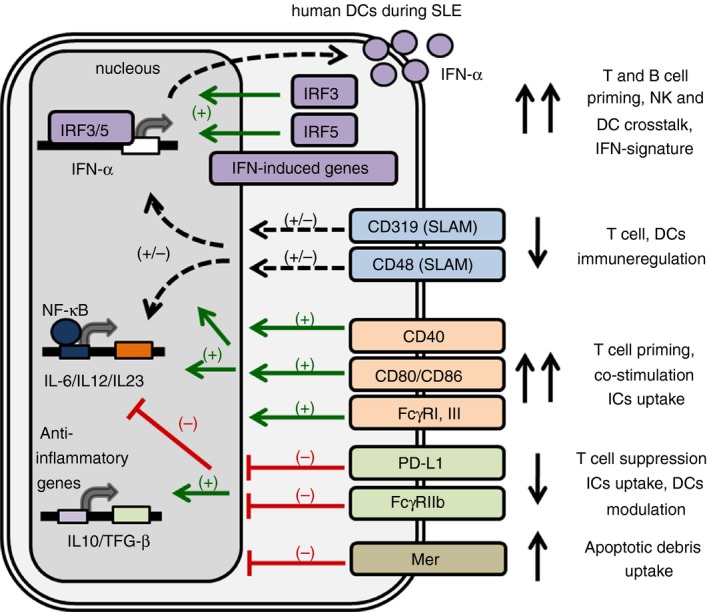Figure 1.

Human dendritic cell (DC) phenotype during systemic lupus erythematosus (SLE). DC modulation is mediated by different signals that may lead to DC activation and initiation of the immune response, or may lead to immunosuppression. DCs from SLE patients showed an increased expression of interferon‐α (IFN‐α), IFN regulatory factor 3 (IRF3), IRF5 and IFN‐induced genes, which correspond to the IFN signature. Similarly, SLE DCs show an increased expression of co‐stimulatory molecules, such as CD40, CD86 and activating FcγRs, showing a mature phenotype. In contrast, the expression of immunoregulatory molecules such as SLAM (CD319, CD48), the co‐inhibitor molecule PD‐L1 and the inhibitory FcγR are decreased in SLE. This mature‐type phenotype of DCs with higher expression of activating (and lower expression of inhibitory) signals may promote naive T‐cell priming and B‐cell activation, favouring a deregulated T helper type differentiation and antibody production.
